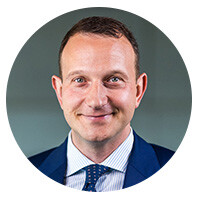Welcome to the era of pseudo-productivity!
Dear readers,
It’s Monday morning, 8:00 a.m. You walk into your office as usual. Your calendar is packed, your inbox is overflowing and in just a few minutes, the first of many meetings begins. Throughout the day, you switch from task to task, constantly interrupting your work for emails and ad-hoc requests. By the end of the day, you find yourself asking: “What did I actually accomplish today?”
| If that feeling sounds familiar, you’re not alone. Many professionals and leaders feel trapped in a world of “pseudo-productivity.” The traditional idea of productivity, working long hours, being constantly available, and responding instantly, still dominates. But what if this very behavior is doing more harm than good? |
The illusion of productivity
For decades, the assumption was simple: the more you work, the more productive you are. Organizations often measure performance by the number of tasks completed or visible activity. But research shows this definition is outdated. Multitasking and constant interruptions increase cognitive load and lead to a sharp drop in performance. On average, it takes 23 minutes to refocus after an interruption and that loss of concentration quickly adds up to several hours of inefficient work each day.
“Pseudo-productivity” occurs when constant availability and frantic activity create the appearance of performance without delivering lasting results. More time is spent on internal coordination, unplanned meetings, and answering emails than on actual core work. This kind of busyness feels active but rarely moves things forward in a meaningful way.
Less is more: a new kind of productivity
The answer lies in redefining productivity – putting quality before quantity. Instead of doing as many tasks as possible, the focus should be on fewer but more impactful activities. That means:
- Fewer but more meaningful tasks
Don't get lost in endless to-do lists. Work on fewer projects at the same time - but with greater intensity and quality. - Working with your natural rhythm
Everyone has personal peaks and lows in their workday. Your biological clock determines when you’re at your best. Some perform best in the morning, others in the afternoon or evening. Use your natural rhythm to make the most of your peak productivity hours. - Long-term impact over of short-term wins
Don’t get caught up chasing quick wins. Set long-term, high-impact goals and work toward them with focus. History shows that breakthroughs often happen in periods of deep concentration. Isaac Newton developed his theories not between meetings, but in long, uninterrupted work phases. Jane Austen wrote her novels in secluded focus. Great ideas need space, not constant distraction.
Change always meets resistance. Perhaps in your organization, you still rely on short-term efficiency measures because they’re easier to track. But meaningful transformation takes time. The risk of procrastination increases when structure is lacking, fewer tasks on your list require stronger self-discipline to remain productive.
Of course, in some fields – such as healthcare or emergency services – rapid response times are essential, so this form of productivity isn’t always practical. The challenge is to determine where in your organization this new productivity model makes sense and where traditional structures should remain.
Your role as a leader
As a leader, you play a key role in the shift toward sustainable productivity. Measure performance not just by visible activity, but by the quality of work delivered. Reduce interruptions, cut unnecessary meetings, and allow dedicated time for deep, focused work. When you prioritize truly value-adding activities, you’ll see higher work quality, greater innovation, and more satisfied employees over time.
The transition doesn’t have to happen overnight. Test targeted measures and adjust them gradually:
- Set clear priorities, avoid juggling too many projects, and manage workload intentionally.
-
Schedule distraction-free work blocks for deep concentration.
- Replace meetings with asynchronous communication where possible. When meetings are necessary, keep them efficient.
- Delegate tasks, eliminate nonessential work and streamline processes.
- Swap short-term busyness for strategic, long-term planning that delivers sustainable results.
The future of productivity is not about working more, but working smarter. It's about prioritizing quality over quantity, managing time intentionally and building work models designed for long-term success.
Sustainable productivity is not a passing trend, but a necessary shift that will pay off for years to come.
Yours, Daniel Keller
|
Explore our e-learning modules on productivity and effectiveness: New form of productivity |
Image source: Photo by creativeart on Freepik

